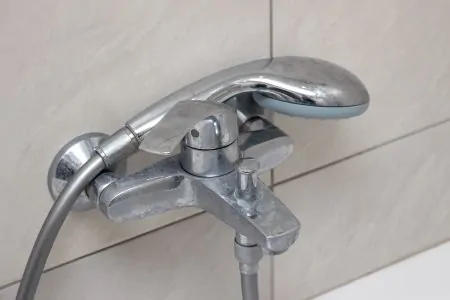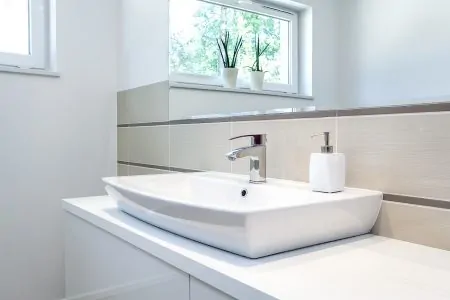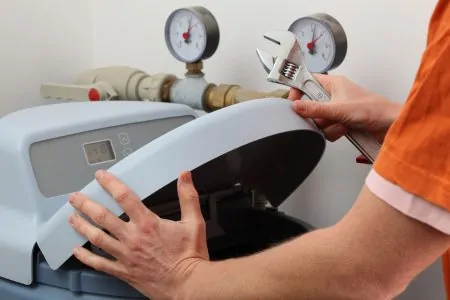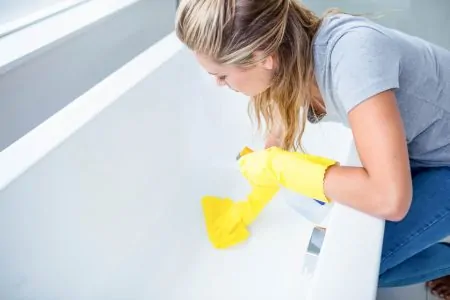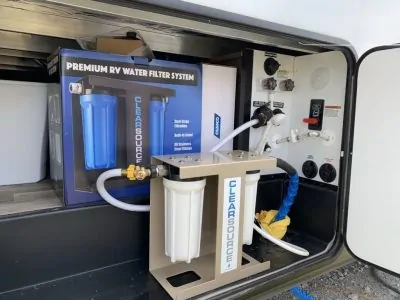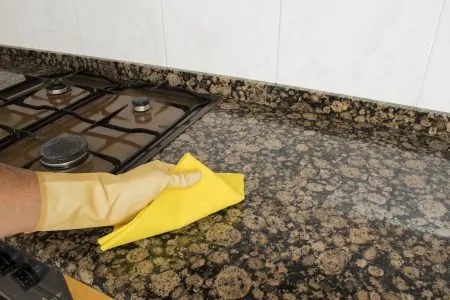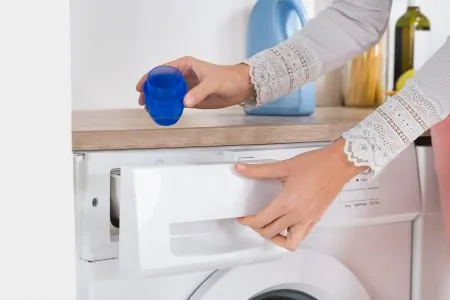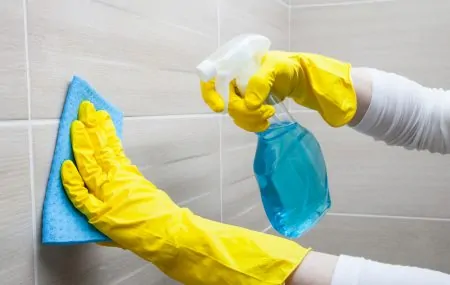Hard water can leave marks and stains on your kitchen surfaces and appliances, even if they are made of stainless steel. In an otherwise clean kitchen, these stains will be unsightly and can make your fixtures look older than they are.
Modern faucets and other surfaces are designed to be as easy to wipe clean as possible. However, stains can remain if hard water is allowed to dry on the surfaces, so it is important to clean them the right way.
In this article, we will show you how to remove hard water stains from stainless steel and how to keep marks from appearing on your outlets and appliances. All of these methods are quick and easy to do at home.
Key Takeaways
- Remove hard water stains using vinegar, baking soda, olive oil, and lemon juice for appliances.
- Clean faucets and sinks with white vinegar and a cloth.
- Use white vinegar and a cloth to clean cookware.
- Combine vinegar and warm water to remove stains from utensils.
How to remove water spots from stainless steel depends on the specific item you need to clean. Stainless steel is commonly found in appliances such as refrigerators, stovetops, and dishwashers. It is also used in faucets, utensils, sinks, and countertops.
Hard Water Stains on Appliances
This method can be used on refrigerators, dishwashers, and stovetops. You will need the following items:
- Vinegar
- Baking soda
- Olive oil
- Lemon juice
- A soft cloth or paper towel
1. Make a Paste
Combine a ½ cup of baking soda with a ¼ cup of vinegar. Add a tablespoon of olive oil and an equal amount of lemon juice, then mix it well. The resulting paste will be mildly acidic and should also be slightly wet.
It is important to achieve the right paste texture when cleaning vertical surfaces — if it is too runny, it won’t stick.
2. Apply
When your paste is ready, dip a cloth or paper towel into it. We prefer to use paper towels to avoid staining a cloth, but both options work equally well. If you use a cloth, choose a microfiber one as it won’t leave water streaks on stainless steels.
Gently rub the paste into the surface, following the grain of the steel. Following the grain is important to prevent scratching the surface. Avoid scrubbing hard — baking soda is mildly abrasive, so it won’t require much pressure to clean effectively.
Try to cover the entire area. If your appliance is large, such as a refrigerator, you might need to mix a couple of batches.
3. Wipe
Leave the paste on the surface for up to 10 minutes. Then, use a damp cloth or paper towel to wipe the area and remove the mixture.
Hard Water Stains on Faucets and Sinks
For this method, you only need two items:
- White vinegar
- 2 x cloths
1. Soak a Cloth
Soak a cloth in pure white vinegar. Vinegar is acidic, which makes it very effective against hard water stains. It is also a natural product and less harsh than other chemicals, so it is perfectly safe for use on stainless steel (1).
2. Scrub
Start scrubbing the entire surface of the sink using small, circular motions. Apply some pressure and soak the cloth again if it starts drying out. Keep rubbing until all hard water stains are gone.
Pay close attention to any tight spaces around the faucet and the handles. You should also scrub the handles well, as we often leave water on them during use.
If the water flow is reduced due to mineral buildup, wrap a cloth soaked in vinegar around the spout. You might need to leave it overnight. Rinse by it turning on the faucet and wiping the tap with a damp cloth.
One old trick among homeowners is to cut a lemon in half and push one of the halves over the end of the spout. Leave it for a couple of hours before rinsing and wiping the area.
3. Wipe and Dry
Dampen a cloth in clean, warm water and wring out the excess liquid. Use the damp cloth to wipe the stainless steel surface and remove the vinegar.
Finish by wiping the entire area again with a dry cloth. Drying the sink and faucet is essential if you want to prevent any new stains from developing.
Hard Water Stains on Cookware
When removing your stainless steel pots and pans from the dishwasher, you might be unpleasantly surprised by how dirty they still look. Dried mineral deposits can accumulate in the corners and along the edges of pots and pans.
Fortunately, there is an easy way to get rid of these white marks. To do it, you will need:
- 2 x cloths
- Towel
- White vinegar
- Soak: Soak the cloth in the white vinegar.
- Clean: Wipe the spots to remove them.
- Wipe: Use a clean, damp cloth to wipe the vinegar away.
- Dry: Wipe the utensils with a towel to dry them.
Getting Rid of Hard Water Stains on Utensils
Hard water stains on stainless steel utensils are harmless but they can make items look dirty. Thankfully, removing mineral deposits from utensils is very straightforward.
If the stains are only minor, you can simply wipe them away with a damp cloth and then dry the utensil with a towel. If the stains are more stubborn, follow these steps:
- Mixture: Combine equal amounts of vinegar and warm water. You can submerge the utensils in a bucket or spray the solution on with a spray bottle.
- Wait: Leave the utensils for 10 minutes.
- Rinse: Rinse the utensils with clean water.
- Dry: Dry them with a towel.
FAQs
Beating the Stains
The best way to avoid hard water stains on stainless steel is by always wiping off excess water. If water is allowed to dry naturally, it can leave behind mineral deposits in crevices and other difficult-to-reach places. These deposits are white, cloudy, and sometimes grainy marks.
White vinegar is highly effective if you want to get water marks off stainless steel while avoiding harsh chemicals. Its natural acidity cuts through the deposits and encourages them to dissolve quickly. Always avoid abrasive tools and cleaners such as bleach and steel wool — these can permanently damage the surface of the steel and allow rust to form.
